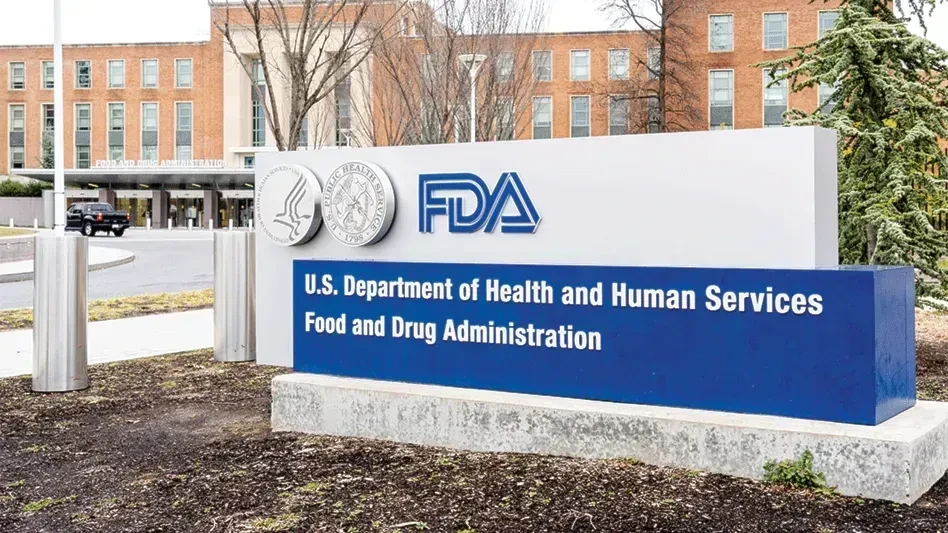As the weather cools and rodents begin seeking new sources of food, warmth and shelter, food plants become increasingly attractive and plant personnel must up their defense.
To assist in these efforts and provide best practices for prevention, we sought expert advice from the pest control industry. Following are the top reasons and recommendations from experts from:
- Hulett Environmental Services: John Townsend, commercial sales manager; Greg Rice, Joe Malinowski, commercial division director; and Greg Rice, marketing director.
- Modern Pest Services: Mike Peaslee, technical manager.
- David Mueller: “Reducing Customer Complaints in Stored Product Pests” by David Mueller (Insects Limited, 2010).
- Royal Pest Management: Phil Mullen, commercial account specialist. Steritech: Brian Beidle, technical projects manager.
THE TOP …
... reasons rodents are attracted to food plants.
Hulett. Food smells, harborage, other rodents (breeding) and lack of predators can all attract rodents to food plants.
Modern.
As the temperatures begin to cool, rodents may be attracted by the warmth of buildings. The smells emanating from food plants will be attractive for rodents throughout the year as its sense of smell is one of the rodent’s keenest senses. Steritech. Many facilities are located in rural settings, where there is already a moderate rodent population, particularly when agricultural crops are nearby. Many plants are also housed in older buildings, where gaps and cracks have accumulated over time, and operations are often 24/7, making proper cleanup more difficult.
Mueller.
Rodent attractions can include food or feed spillage; standing water; open lids on dumpsters and piles of trash or pallets, particularly if located near a plant entrance; and dense, low-growing shrubs or tall weeds and grass around foundations that provide harborage.
Royal.
Add to plant odors any unsanitary conditions around the plant and structural make-up providing harborage for the rodents and you provide a very attractive site for rats and mice.
... recommendations for inspecting the plant before cold weather sets in.
Modern.
Food plants should be inspected every month; prior to the onset of cold weather added emphasis should be placed on inspection for physical damage, such as holes and openings in the building that allow pests to enter. From the interior, look for areas where light can be seen beneath doors, through cracks in walls, around conduits, utility entrances, etc. Hulett. Ensure that an exterior baiting program is in place, and inspect the perimeter for burrows, runways, entry points and dumpsters near the building. Inspect smoking and outdoor dining areas, retention ponds and pallet storage for evidence of rodents and implement preventive tactics. On the interior, check uncapped drains, water sources, low traffic areas and potential nesting sites. Ensure stock rotation, sanitation, maintenance, and HACCP programs are in place. Review audits, service and chemical usage logs, history and trend reports, and activity logs to ensure corrective action has been taken.
Mueller.
Warehouse areas should have an 18- to 24-inch, white inspection aisle around the inside of exterior walls. This allows inspectors to walk behind stored products and provides a place for traps. When a suspected rodent entry point is found, look closer for rub marks—dark, greasy stains that show the rodents’ travel routes.
Royal.
It’s a great idea for a plant manager to go with the pest control provider on inspections. Although the technician can tell or write about an issue, it is easier for plant personnel to understand an issue when it is shown and explained face to face.
... recommendations in preventive actions to preclude rodent entry.
Royal.
The first step is to remove all harborage locations noted in the inspection. It can also be beneficial to create a barrier around the exterior of the facility by laying small rock quarry out 18 inches. It is also a good idea to conduct an in-depth structural inspection of your facility anytime there is a significant weather event or change that would cause rodents to seek shelter, such as flooding or the first cold spell. Steritech. Check that door sweeps are in good condition and not warped; if rubber sweeps show signs of wear, replace them with bristle-style sweeps. Inspect trailers and their contents before bringing them into the facility to guard against bringing harboring rodents in as well. Conduct quality assessments at night to determine if any doors are being propped or left open. Ask nearby growers or farm owners to plow away from rather than toward your facility to push rodents away.
Hulett.
Develop or modify your HACCP plan designating pest control and exclusion as a part of the regular sanitation and maintenance regimen and a clear SOP for daily maintenance. An action plan should include regular maintenance of potential entry points, including electrical, HVAC and plumbing lines; frequent dumpster maintenance, cleaning and rotation; interior and exterior sanitation; product rotation and full visibility in low-traffic areas; multiple layers of defense through rodent station placement from interior perimeter to fenceline (with bait used only outdoors); and elimination of excess water in and around the facility.
Modern.
Your pest management provider should include inspection as part of an ongoing program and document and report any conducive conditions at each service. Areas identified as conducive for pest entry should be repaired or sealed.
Mueller.
One new approach to controlling rodents is the use of a non-toxic rodent pellet with an impregnated color dye. When a rodent eats the bait, its urine takes on the dye color which will fluoresce when illuminated. If different color baits are set in various locations outdoors, it can quickly be determined where the rodent entered, thus where a structural defect may exist, a door is being left open, and/or increased trapping or baiting should be set.
... reasons to protect against rodents.
Hulett.
In addition to product damage, rodents can cause health risks and negatively affect employee morale. For the company, they can cause loss of profits and reputation, harmful publicity, and even lawsuits. Steritech. Rodents were implicated as the source of Salmonella contamination of peanut products from Peanut Corporation of America (PCA). The recall affected more than 3,000 products from numerous manufacturers, caused 714 illnesses across 46 states and nine deaths. When feeding, rats and mice may contaminate 10 times what they consume. In addition to spreading disease, rodents gnaw on wires, potentially leading to short circuits, inoperable phones or monitoring equipment and fires.
Royal.
One of the most important reasons to protect against rodents is the damage from urination or defecation on food supplies. This not only makes the foods unusable, but can lead to plant closure by the USDA or FDA. If this happens, the plant loses not only the commodity and costs of removal, but also lost hours and damage to its reputation. In addition to disease, rodents can carry secondary types of pest infestations, such as fleas and ticks, which can be harmful to food and employees.
Conclusion.
As the weather changes, rodents will begin seeking harborage from the impending cold, and your plant is likely to be a top choice for their winter home. As your teams conduct inspections and implement preventive actions, documentation is critical. But even more critical is follow up and corrective action on the findings.
The key to this is prioritizing and taking action step by step. Even if you find tens or hundreds of areas that need corrected, prioritize the top two or three critical items and work with your pest management provider to complete these. By gradually moving down the list you can tighten your rodent defense step by step.
The author is Managing Editor of QA magazine. She can be reached at llupo@giemedia.com.

Explore the August 2010 Issue
Check out more from this issue and find your next story to read.
Latest from Quality Assurance & Food Safety
- Tecnologico de Monterrey Develops Nutraceutical Corn to Address Global Food Crisis
- Eurofins Healthcare Assurance Launches GMP Certification Program for Dietary and Food Supplements
- Calbee America Launches California R&D Innovation Center
- PepsiCo Completes Acquisition of Siete Foods
- Non-GMO Project Launches Non-Ultraprocessed Foods Verification
- FDA to Hold Webinar on Updated ‘Healthy’ Claim
- High-Tech Partnership Creates Natural Blue Color for Greener Tomorrow
- Kraft Heinz Hosts Innovation Challenge for Sustainable Packaging





